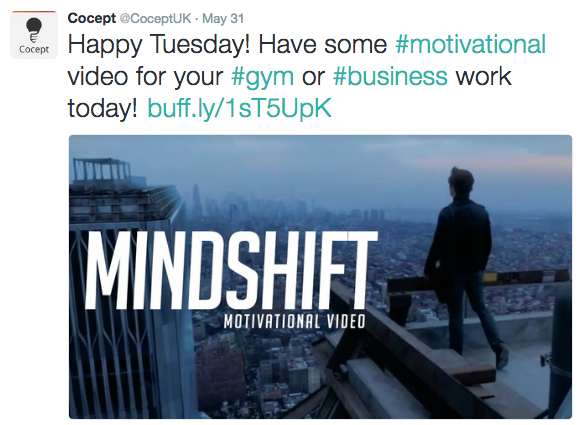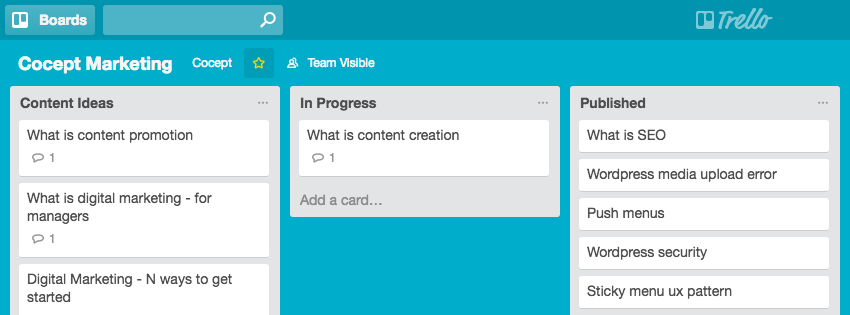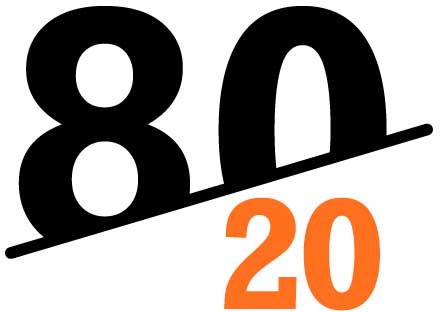What is Content Creation?
Making stuff that people will enjoy consuming and sharing, to benefit your business
Err… can you narrow down “stuff”? Well, in this context, stuff can be anything really, provided that it fits the above criteria.
Content Creation is a key part of content marketing, which aims to bring people from your target audience into your sphere of influence, with the goal of converting them into customers some time down the line.

Why Do Content Marketing?
Content Marketing is like Guerilla Warfare. It’s cheap, smart (cunning?), effective and runs against the grain. With it, you enrich as opposed to interrupt.
Unlike traditional marketing methods which take a scatter-gun approach, you have tight control of who sees your message. The content you create can be targeted at, and disseminated amongst a particular sector of society that fits your typical customer. This minimizes waste.
Because its focus is to create things that are useful to the consumer, it generates much more good will than the typical hard sell.
If “Pay to get in the way” is the mantra of traditional marketing, “Create and they will come” is that of content marketing.
It helps build long term relationships with your customers, and that can only be good.

Ok let’s do this! But how?
Research
First, it’s a good idea to review your existing situation; it might reveal some tips on where to head. Get as much data on your existing content marketing activities as possible to figure out what has worked for you in the past.
Google Analytics is a great tool for this. We’re looking to find the best performing content mediums (blog posts, podcasts, webinars etc), topics and publication times so we can follow up on their success.
If you are starting from scratch, look at your competitors content marketing activity to get an idea of where to start from. You can use tools like buzzsumo, uprise and followerwonk to find share stats for their articles.
Strategy
Business Objectives
Well defined business objectives are a great starting point when defining marketing strategy
Define some clear business objectives to help direct your marketing activity. These might be to increase traffic, conversions, engagement or brand loyalty.
Target Audience
Decide on your target audience. You or your marketing department will have a good idea of who this is. It helps to create a persona that represents your target audience. Specify their gender, age, interests, job etc.

Keyword Research
Keyword targeting defines what topics and incoming searches you will target with your content. It determines what kinds of customers will find you, which direction your campaign takes, and how successful it is.
Brainstorm a list of keywords to use as a starting point, and then use that list to find alternatives and synonyms with high search volume but low competition.
Planning
A good Content Marketing strategy involves a content publication plan. This may take the form of a 3 month editorial calendar, a flexible weekly content type schedule, or anything in-between.
If you’re creating an editorial calendar it should describe what will be made, by whom, and finally when it’s due.
What
Typically a company will list the types of content they want to publish and then set schedules and targets for each one. Here’s Cocepts flexible(!) weekly content schedule:
- Entertainment (Monday and Sunday)
- Self Promotion (Tuesday)
- Information (Wednesday and Friday)
- Questions (Thursday and Saturday)
- Controversy (Once monthly)

Plan the mediums you want to use. The options here are vast, and can include anything from blog posts, to podcasts, to press releases, to complete standalone websites like Cocept’s Property Investment Calculator.
When
Consider when to post. This will depend on which platforms you focus on. That in turn will depend on your target audience. For example, for B2B, you may want to focus on LinkedIn, where the best posting times are 10am on Tuesdays.
Creation
The Creative Process
Each individual’s creative process is unique, so make sure you give your team members flexibility.
Capitalise on previous success by re-purposing old content. Create in different mediums but on the same theme to expand your reach and prolong the lifespan of a successful topic.
Keeping Track
Keep all content ideas and give everybody in the team access to collaborate, comment and vote.
We use Trello to manage our content marketing workflow. This works like an editorial calendar in that you can set the order of priority, due dates and assignees. Use powerups to enable voting.

Each idea is recorded with a working title and a justification that links it to a business objective defined in our marketing strategy.
The planning process should ensure that the content you create is relevant to your marketing strategy, and therefore your business goals.
Quality Control
Needless to say, better quality content is more efficient in attracting social interaction (likes, shares etc) which in turn feeds back to your search engine performance.

Written copy should take the following into account:
- Well written titles grab the initial attention of users
- The introductory paragraph hooks the reader’s attention
- A story spine to the copy will keep readers engaged while reading
- Check and recheck the facts. Use data from reliable sources
- And of course spelling and grammar reflect directly on your brand
Editing
Don’t let opportunities or errors slip through the net. A strong editing and proof reading process lets you…
- Make sure each bit of content achieves a business goal
- Ensures the text is as high quality as possible so you get the most out of your content ideas
- Contains factually correct data
- Doesn’t have spelling miktakes and, grammare errors’
Promotion
Great content with no promotion (or without Search Engine Optimisation) is like building a 50m high solid gold statue and then throwing it into the middle of the Atlantic Ocean.
Here are some ways to promote your team’s great work:
- Reach out to other publishers to get your content (and author / company name!) featured on their site
- Have the press disseminate your content for you (as long as it is indeed newsworthy)
- Have your social followers share and like the content, pushing it through their social circles too
- Publish it to your newsletter subscribes (because you do have a newsletter… right?)
Be scrupulous to whom you give permission to publish your content. Choose brands that add value to yours through association.
Content farms that churn out low quality content with no running theme should be avoided. Conversely, sites with a good reputation and that are well built should be targeted.
When sharing on social media, it’s considered good practice to follow the 80/20 rule (or 70/30 if you’re feeling lucky, punk!). This means that 20% of your content is self promotion, while the other 80% is… well, anything else.

Self promotion is original content: news about your company, posts you write, infographics you create etc. The rest should be industry news, sharing posts by bloggers covering the same kinds of areas, entertaining content, etc.

Finally, when contacting people to publish your content, it’s important to remember that…
Sustainable outreach is about rapport, not just backlinks
… the more you are able to build relationships with the key influencers and publishers within your industry, the better your promotion network will work for you.
Evaluation
You need to know what works, so you can do more of it, and what doesn’t, so you can stop wasting time on it.
Tools like Google Analytics or Social Mention provide you the data that will lead to such insights.
Results
In the same way that the results of individual posts can be measured, so can your general content marketing activities.
Use Google Analytics note feature to mark when you perform certain activities, and over time you’ll see a gradual trend.

Know, however, that content marketing is a long term strategy that tends to snowball. Don’t expect results overnight, and equally, don’t take knee jerk reactions to daily swings in metrics.
There’s a lot of noise and variables in this activity, so it’s more important to pay attention to long term trends than daily ones.
For a more in-depth read about content creation and content marketing in general, check out Koozai’s white paper on the subject.
